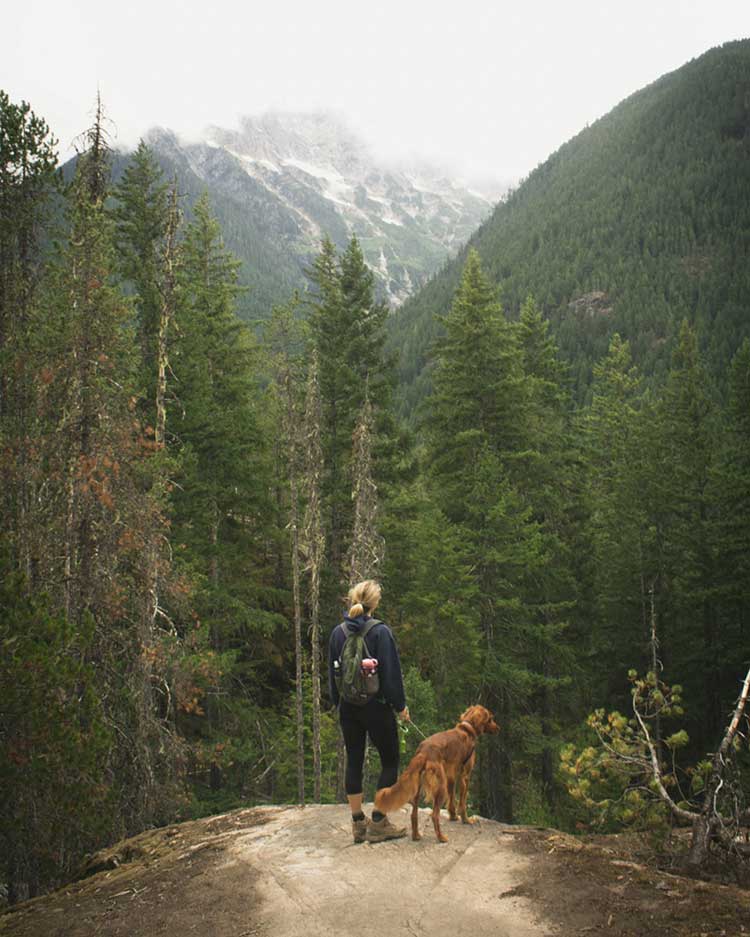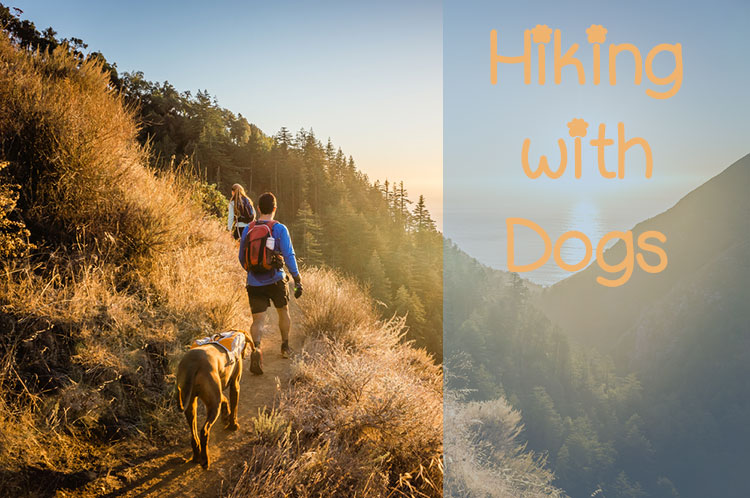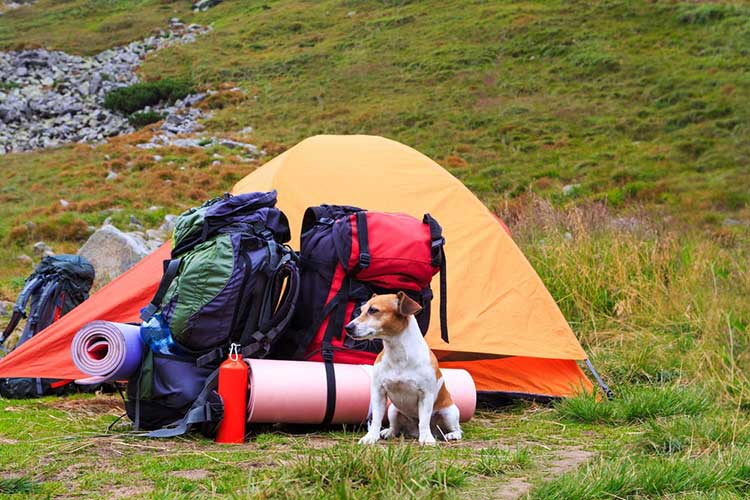
If you’re like most dog owners, you love sharing adventures with your furry companion—including camping trips. Camping with your dog isn’t just enjoyable; it also strengthens your bond, builds trust, and provides valuable physical and mental stimulation for both of you. Your pup gets to explore new sights and smells, while you benefit from their companionship and the extra motivation to stay active. Plus, having your dog by your side can make outdoor adventures even more exciting and rewarding. Ready to hit the trail with your four-legged friend? Here’s everything you need to know for a fun and safe camping trip together!
How to Prepare for a Camping Trip With Your Dog
Camping introduces your dog to a variety of new experiences, from car rides and unfamiliar trails to encounters with wildlife and other campers. To ensure a safe and enjoyable trip, it’s essential to plan ahead for every possible scenario. Proper preparation will help keep your dog comfortable, secure, and ready to explore the great outdoors with confidence.
Understanding Campground Rules for a Safe Trip With Your Dog
Not all campgrounds welcome pets, but many across the U.S. allow well-behaved dogs. Before heading out, research each campground’s pet policy to ensure a smooth experience. Contact the campground directly to ask about important regulations, including:
- Leash Requirements: Most campgrounds require dogs to be on a leash no longer than six feet for easy control. Some may prohibit retractable leashes for safety reasons.
- Barking Policies: While occasional barking is expected, excessive noise—especially at night—could lead to complaints or even requests to leave.
- Aggressive Behavior: To maintain a safe environment, campgrounds do not tolerate aggressive dogs. If your dog struggles with new people, other pets, or unfamiliar settings, it may be best to leave them at home.
For an enjoyable trip, consider campgrounds with dog-friendly amenities, such as designated play areas and dog parks, available at select KOA locations. Proper planning ensures a stress-free and fun outdoor adventure for both you and your pup!
Schedule a Vet Visit Before Your Camping Trip
Before booking your campsite, schedule a check-up with your veterinarian to ensure your dog is healthy and prepared for the adventure. Your vet can help confirm that your pup is:
- Up-to-Date on Vaccinations: Many campgrounds and pet-friendly areas require dogs to be current on vaccinations to prevent the spread of diseases.
- Protected Against Fleas and Ticks: The outdoors is full of pests, so ask your vet about flea and tick prevention to keep your dog safe from bites and potential illnesses.
- Microchipped: While not required, microchipping can be a lifesaver if your dog gets lost while exploring. Ensure your contact information is up to date.
- Properly Groomed: A trim can help keep your dog cool in warm weather, and trimmed nails reduce the risk of snags or injuries on rough terrain.
- Healthy Enough for Camping: If your dog has a chronic condition or isn’t feeling well, consult your vet to determine if camping is a good idea.
A quick vet visit before your trip will give you peace of mind and ensure your furry friend is ready for a safe and fun outdoor experience!
Essential Gear for Camping With Your Dog
Bringing your dog along on a camping trip means packing more than just the basics. To ensure a safe, comfortable, and fun experience, you’ll need to bring essential supplies tailored to your pup’s needs. Here’s what to pack:
- Food and Water: Bring enough dog food for the trip, plus collapsible bowls for easy feeding and hydration.
- Treats and Medications: Pack your dog’s favorite treats and any prescription medications they may need.
- Leash and Tether: A sturdy leash (and possibly a long tether) will keep your dog safe and secure at the campsite.
- Identification and Records: Carry a current photo, vet records, and an ID tag with updated contact information in case of emergencies.
- First-Aid Kit: Include essentials like bandages, antiseptic wipes, tweezers (for ticks), and any pet-specific medications.
- Waste Bags: Always clean up after your dog to keep the campground pet-friendly.
- Comfort Items: Pack extra towels, outdoor-safe toys, and a cozy blanket or bed to help your dog feel at home in the wild.
Proper preparation ensures your dog stays safe, happy, and comfortable throughout your camping adventure!
Recommended Gear for a Comfortable Camping Trip With Your Dog
While some camping supplies are essential, a few extra items can enhance your dog’s comfort and safety in the great outdoors. Consider bringing:
- Dog Brush: Helps remove dirt, burrs, and loose fur after outdoor adventures.
- Outdoor Harness: Provides better control and security during hikes and walks.
- Swim-Safe Leash: Ideal for dogs who love to splash around in lakes or rivers.
- Doggy Daypack: Allows your pup to carry their own water, treats, or small supplies.
- Dog Bed: A familiar sleeping spot can help your dog relax at the campsite.
- Rain Jacket: Keeps your dog dry and warm during unexpected weather changes.
- Booties or Paw Protectant: Protects paws from hot surfaces, rough terrain, or cold conditions.
To keep everything organized, pack your dog’s gear in a designated bag so their essentials are easy to access. With the right preparation, your furry friend will be ready for a fun and stress-free camping trip!
12 Essential Tips for Camping With Your Dog

Camping with your dog can be an unforgettable experience, but proper preparation is key to ensuring a safe and enjoyable trip. Before you hit the trail, follow these essential tips to keep your furry friend happy, healthy, and ready for adventure.
1. Plan Ahead
While a last-minute getaway might sound fun, careful planning ensures a smoother trip for both you and your dog. Be sure to:
- Check campground pet policies and rules.
- Schedule a vet check-up to ensure your dog is healthy for travel.
- Reserve a campsite early, especially during peak seasons.
- Map out a travel route with rest stops for bathroom breaks.
- Brush up on obedience training for safe interactions with other campers.
- Invest in high-quality gear, including a well-fitted harness and collar.
2. Take a Recent Photo of Your Dog
In case your dog gets lost, having a clear, up-to-date photo can be crucial. Take a well-lit picture that highlights any unique markings or features, and print a copy to carry with you while camping.
3. Never Leave Your Dog Unattended
Whether at the campsite, in the car, or at a dog park, always keep an eye on your pup. Even if your dog is well-behaved, other animals or unexpected situations could put them at risk. Supervision ensures their safety and helps create a positive camping experience.
4. Upgrade Your Gear
Basic camping gear works, but upgrading to specialized dog-friendly equipment can enhance your trip. Consider:
- Waterproof leashes with rust-resistant clips for swimming adventures.
- Reflective harnesses for visibility in low-light conditions.
- Cooling vests or booties for extreme weather protection.
By planning ahead and packing the right gear, you’ll set yourself and your pup up for an incredible outdoor adventure!
5. Be Aware of Allergies
Just like humans, dogs can suffer from seasonal allergies. If you notice sneezing, itching, wheezing, or signs of an ear infection, your dog may be reacting to pollen or other outdoor allergens. Speak with your vet about treatment options, and try to limit their exposure during high-pollen times.
6. Pack Plenty of Toys
The great outdoors offers plenty of stimulation, but don’t rely on it alone to keep your dog entertained. Weather conditions can change, or your pup may get restless at the campsite. Bring a variety of outdoor-safe toys, like rope chews, plushies, and tennis balls, to keep them engaged.
7. Keep Your Dog Hydrated
Being outdoors increases your dog’s water needs, even during low-energy activities. Adult dogs typically require one ounce of water per pound of body weight each day—but they may need more while camping. Use a collapsible water bowl for hikes and a large, outdoor-safe bowl at the campsite. Keep the bowl in a shaded area and check frequently for dirt, leaves, or debris.
8. Try a Trial Run Before the Trip
If your dog is new to camping, it’s a good idea to ease them into the experience. Here’s how:
- Take Longer Walks: Strengthen their leash skills and build endurance for outdoor adventures.
- Spend More Time Outside: If your dog isn’t used to being outdoors, introduce them gradually by spending time in the yard or on the porch with their favorite toys.
- Practice Socialization: If you’re heading to a pet-friendly campground, prepare your dog for interactions by arranging playdates with other dogs.
- Set Up a Backyard Campout: Mimic a real camping trip at home—set up a tent, keep your dog leashed or secured, and enjoy a fire with family or friends. This will help you assess their comfort level before the actual trip.
By planning ahead and gradually introducing your dog to camping conditions, you’ll set the stage for a fun, stress-free adventure in the great outdoors!
9. Keep Your Dog Secure at All Times
Most campgrounds have leash requirements, and for good reason—keeping your dog leashed is the best way to ensure their safety. When exploring a new campsite, your pup may feel excited or overwhelmed by the unfamiliar sights, sounds, and scents. A leash prevents them from wandering off or getting into trouble. Keep your dog leashed during all activities, except in designated off-leash areas like fenced-in dog parks, such as KOA Paw Pen Sites.
10. Be Aware of Wildlife and Hazardous Plants
Camping brings your dog closer to nature, but that also means encounters with wildlife and potentially harmful plants. Keep an eye out for unfamiliar animals, and never allow your dog to chase or approach them. Avoid letting your pup drink from stagnant water, and be cautious around lakes, rivers, or ponds that could contain toxic blue-green algae. Research local plant life before your trip to identify and steer clear of anything poisonous.
11. Plan Fun, Dog-Friendly Activities
Camping is all about making memories with your dog, so plan activities that both of you can enjoy. Some great dog-friendly camping adventures include:
- Hiking scenic trails
- Visiting a pet-friendly beach
- Going boating or kayaking together
- Exploring nearby parks
- Enjoying an outdoor picnic
- Playing fetch or tug-of-war at the campsite
Before venturing out, check if local parks, beaches, or trails allow pets. Many state and national parks have restrictions, so always review leash laws and carry waste bags to clean up after your pup.
12. Pack a Pet First-Aid Kit
A well-stocked pet first-aid kit is a must-have for any camping trip. Always keep it handy while at the campsite and during off-site activities. Essentials include:
- Your dog’s vet records and emergency contact numbers
- A list of current medications or recent treatments
- Gauze, nonstick bandages, and adhesive tape
- Pet-safe sterile eyewash
- A digital thermometer
Before your trip, locate the nearest emergency vet clinic and save their contact details in case of an emergency. Being prepared ensures that both you and your dog can enjoy a safe and unforgettable camping experience!
Dog Safety While Camping
Camping can be a fantastic experience for both you and your dog, but ensuring their safety in an unfamiliar outdoor environment is essential. From overheating risks to paw protection and identification, here are key safety tips to keep your pup happy and healthy during your adventure.
Prevent Overheating
Just like humans, dogs can overheat in the sun—especially those with dark coats or thick fur. Keep your dog cool by providing shade, avoiding strenuous activity during the hottest part of the day, and ensuring fresh, cold water is always accessible.
Watch for signs of overheating, including:
- Excessive panting or heavy breathing
- Restlessness or agitation
- Weakness or disorientation
- Bright red tongue or dry gums
If your dog’s temperature reaches 104°F or higher, move them to a cool, shaded area, offer water, and apply a wrapped ice pack to their groin area. In severe cases, such as lethargy or difficulty breathing, seek emergency veterinary care immediately.
Protect Your Dog’s Paws
A dog’s paw pads are highly sensitive to extreme temperatures and rough terrain. Watch out for hazards such as:
- Hot pavement or sand
- Sharp rocks, burrs, or broken glass
- Cold, wet, or icy surfaces
- Ticks, pests, and other irritants
To keep their paws safe, use a veterinarian-approved paw protectant or invest in protective booties. If your dog has never worn booties before, allow them time to adjust by practicing at home before your trip.
Ensure Proper Identification
Even with careful supervision, dogs can sometimes wander off. To improve the chances of a safe return, make sure your dog has multiple forms of ID:
- A secure collar tag with your contact information
- ID details inside their harness
- A temporary tag with your campsite number
- A microchip, registered with updated information
By taking these precautions, you can enjoy a safe, worry-free camping experience with your four-legged friend!
Camping With Dogs: Frequently Asked Questions
Planning a camping trip with your dog? You’re not alone! Many pet owners have questions about how to make their outdoor adventure safe, comfortable, and fun for their four-legged companion. Here are answers to some of the most common concerns.
What Can I Do With My Dog While Camping?
Camping is a great opportunity to bond with your dog while exploring nature together. Beyond hiking and playing, you can use this time to:
- Socialize your dog at pet-friendly campgrounds.
- Brush up on training and reinforce obedience commands.
- Teach new tricks in a relaxed, distraction-free environment.
- Simply enjoy quality time together away from daily routines.
The key to a great camping trip is keeping your dog engaged and active while strengthening your bond in a new and exciting setting.
Can Dogs Sleep in Tents?
Yes! Tent camping with dogs is absolutely possible with the right preparation. Keep these factors in mind:
- Tent Size: Choose a spacious tent to ensure comfort, especially for medium or large dogs.
- Security: Always zip and secure the tent to prevent your pup from wandering off at night. Placing gear in front of the entrance can add an extra layer of security.
- Noise Sensitivity: Some dogs may bark at unfamiliar nighttime sounds. A battery-operated fan or white noise machine can help keep them calm.
- Sleeping Arrangements: Try to maintain your dog’s usual sleeping routine. Bring their dog bed, crate, or make space in your sleeping bag if they normally sleep with you.
Keep in mind that extreme temperatures—either too hot or too cold—can make tent camping uncomfortable for your dog. By planning ahead and considering your dog’s needs, you can ensure a stress-free and enjoyable camping experience for both of you!
Where Can I Go Camping With My Dog?
Many campgrounds are pet-friendly, but rules can vary. Always check a campground’s website for their pet policy, and call ahead to confirm breed restrictions, leash requirements, and behavior guidelines. The same applies to hiking trails, beaches, and state or national parks, as each location has its own regulations regarding pets. Whether you’re heading to the mountains, the beach, or an urban escape, you can enjoy camping with your dog as long as you follow local and campground rules.
How Do I Take My Dog Camping in a Car?
For some dogs, car rides are an exciting adventure; for others, they can be stressful. If your dog isn’t used to traveling, gradually introduce them to car rides by starting with short trips and slowly increasing the duration. To make the back seat comfortable, lay out blankets and pillows, bring their favorite toys, and use a spill-proof water bowl for easy hydration. If your pup shows signs of restlessness or anxiety, take breaks at safe pull-off spots so they can stretch, relieve themselves, and reset. Training treats can also reinforce positive behavior and help them associate car rides with a fun experience.
What If I’m Camping With Multiple Dogs?
Camping with more than one dog can be a great way to keep them entertained, but it requires extra planning. Before booking, confirm that your chosen campground allows multiple pets and if there are any restrictions. Bringing along a friend or family member can also make it easier to manage walks, activities, and campsite setup, ensuring a smooth and enjoyable trip for everyone—including your dogs!


